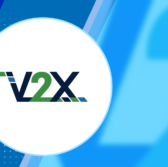SES and Intelsat have agreed on a $3.1 billion acquisition deal that would see the U.S. satellite services provider combine with the Luxembourg-based satellite firm to establish a multi-orbit operator with expanded coverage, resources and capabilities to support customers.
In a joint announcement Tuesday, both companies said existing cash and equivalents, as well as new debt issuance, will finance SES’ acquisition of Intelsat, which is subject to receipt of relevant regulatory clearances and other relevant requirements expected during the second half of 2025.
The move is aimed at expanding multi-orbit satellite-based capabilities, spectrum portfolio and global ground network, increasing revenue in high demand and growing networks segments, consolidating complementary space, ground and network innovation investment and bringing together talent, expertise, engineering knowledge and go-to-market capabilities.
Commenting on the transaction, Intelsat CEO Dave Wajgras said, “By combining our financial strength and world-class team with that of SES, we create a more competitive, growth-oriented solutions provider in an industry going through disruptive change. The combined company will be positioned to meet customers’ needs around the world and exceed their expectations.”
He considers the move as a “strategic pivot,” saying that it makes the foundation for the next chapter of the company.
“Over the past two years, the Intelsat team has executed a remarkable strategic reset. We have reversed a 10-year negative trend to return to growth, established a new and game-changing technology roadmap, and focused on productivity and execution to deliver competitive capabilities,” said Wajsgras, a seven-time Wash100 awardee. “The team today is providing our customers with network performance at five 9s and is more dedicated than ever to customer engagement and delivering on our commitments.”
The combined SES is expected to have a fleet of more than 100 geostationary earth orbit and 26 medium earth orbit satellites providing enhanced coverage, better network resilience, complementary spectrum rights and improved service delivery.
Current management teams of both companies will remain focused on their respective near-term business and financial objectives prior to the closing of the transaction.





